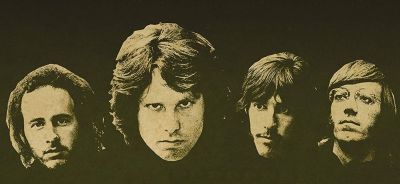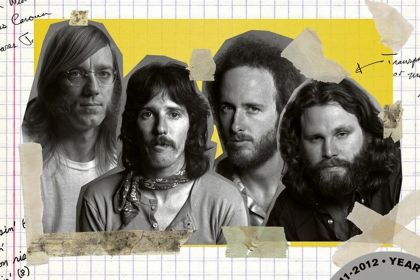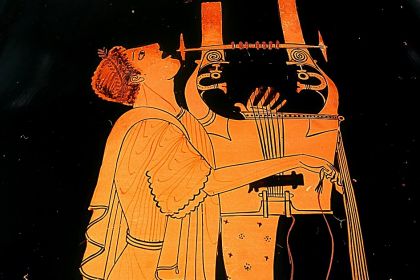Music Theory
Mixolydian mode in The Doors songs

The Doors, Live In Boston CD cover
It is no secret that the harmonic structure of a song and its adherence to the canons of musical theory is one of the key factors contributing to the perception of music and lyrics, which ultimately determines the long-term popularity of a composition.
Only a third of 59 total studio songs released by The Doors on their six albums with frontman Jim Morrison at the helm follow the tonal theory. These 21 tracks are written using predominantly the Ionian and Aeolian modes which are the go-to choices in classical and popular music. The Mixolydian, Dorian, and Lydian modal modes appear in The Doors output a little less frequently, while the Phrygian do not appear in the band's compositions at all.
Of all the modal modes, Mixolydian is especially popular among rock musicians for its ability to generate a special major mood through its harmonic structure detailed in our article covering 7 songs featuring Mixolydian mode.
Below is the harmonic analysis of all four The Doors tracks containing examples of the Mixolydian diatonic scale.
The first appearance of the Mixolydian mode occurs in The Doors' The End that closes their self-titled 1967 album. In the harmonic analysis of the song chord chains, the scale degrees (denoted with Roman numerals) show the following progressions in D Mixolydian:
- D–C–D or I–VII–I;
- D–C–G–D or I–VII–IV–I;
- D–G–D or I–IV–I.
Throughout the track, the trance-like narration is accompanied by harmonic progressions that combine all three major triads of the Mixolydian mode rooted in the first, fourth, seventh scale degrees. There are also some recitative sections featuring the sole D tonic chord in the background.
The IV–I musical turnaround observed at the end of the second and third progression is referred to as the plagal cadence and involves the primary major chords of the Mixolydian mode.
Listen to The End (2017 Remaster) by The Doors:
L.A. Woman, the title track on the band's 1971 album of the same name, is based on the simple alternation of two major chords built on the first and seventh degrees of the A Mixolydian scale: A–G–A or I–VII–I. The same progression, but in a different key, has appeared in the first chord chain of the previous example and forms a somewhat common rock riff also observed in If I Needed Someone by The Beatles and Dark Star by the Grateful Dead.
Listen to L.A. Woman by The Doors:
All sections in Hyacinth House, except for the bridge, are accompanied by chord progressions composed in D Mixolydian:
- D–Em–D or I–ii–I;
- D–Am–G–D or I–v–IV–I;
- D–G–Am–G–D or I–IV–v–IV–I.
The chord chain that accompanies the bridge, starting with the lyrics "I see the bathroom is clear," shows a deviation into D Ionian: D–Em–F♯m–G–A or I–ii–iii–IV–V. The progression ends with the authentic half cadence involving the A major dominant triad rooted in the fifth degree of the Ionian diatonic scale that precurses the D tonic chord at the beginning of the next song section.
Listen to Hyacinth House by The Doors:
Technically, the alternation of the major tonic and minor supertonic triad that form the first chord progression in the previous example can be interpreted as both Ionian and Mixolydian, since the structure of the chords rooted in the first and second scale degrees is identical in these diatonic modes. Therefore, Indian Summer, built on the same two-chord alternation of D–Em–D, can be attributed to both Mixolydian and Ionian modes.
Listen to Indian Summer (2020 Remaster) by The Doors:
Explore how The Doors uses other musical modes:
- Dorian mode in The Doors songs
- The Doors songs with Aeolian and harmonic minor modes
- Peace Frog: the only Doors song featuring Lydian mode
Discover more songs composed in Mixolydian major mode and check out their harmonic analysis in the following articles:
- 7 songs featuring Mixolydian mode
- Scarlet Begonias: three major Mixolydian chords in a Grateful Dead's ballad
- Carpet Crawlers: two major modes of Genesis' last studio recording
- The Bells of Rhymney: two major modal modes of famous protest song
- Seven Seas of Rhye: song of imaginary land brought to life by Ionian and Mixolydian modes
- Longfellow Serenade and the fireside poet that kindled Neil Diamond's song



